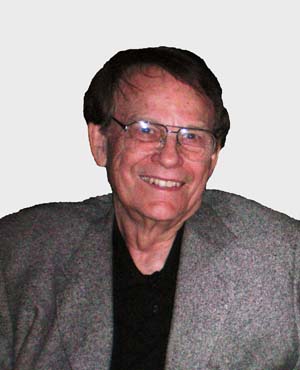CHET HERBERT PASSES
 personal challenges and went on to develop some of auto racing’s most significant speed components.
personal challenges and went on to develop some of auto racing’s most significant speed components.Growing up in Southern California’s early hot rod scene, the teenaged Herbert had a reputation for building and racing fast cars and motorcycles. When he was 20 years old, though, he was stricken with polio and lived the rest of his life in a wheelchair, paralyzed from the chest down.
Drag racing pioneer and innovator Chester “Chet” Herbert died on April 23, 2009. Herbert, born on March 4, 1928, overcame huge  personal challenges and went on to develop some of auto racing’s most significant speed components.
personal challenges and went on to develop some of auto racing’s most significant speed components.
Growing up in Southern California’s early hot rod scene, the teenaged Herbert had a reputation for building and racing fast cars and motorcycles. When he was 20 years old, though, he was stricken with polio and lived the rest of his life in a wheelchair, paralyzed from the chest down.
“My grandmother told me he was so wild about racing, that if he didn’t have polio to slow him down, he probably would have died,” said son Doug Herbert, 41, who followed his father into professional drag racing. “When my dad was 12, my grandma bought him a trumpet and hoped he’d learn to play. But he traded the trumpet for a Cushman motorscooter and it was life in the fast lane ever since.”
Lying in a hospital iron-lung for six months in 1948, Herbert developed ideas for manufacturing racing parts in his head. When he was released, he developed the first roller camshafts for race cars and was among the first to try nitromethene fuel in a dragster after reading how the German army had used it to power torpedoes during World War II.
Although he never personally raced again, Herbert fielded scores of dragsters, drag motorcycles and land speed-record streamliners for other drivers. His racing Harley-Davidson, nicknamed “The Beast,” was the fastest quarter-mile dragster in its day, having achieved a then record-shattering 129 mph, faster than any car in 1950.
Herbert also developed the zoomie-type exhaust header, which blew the smoke away from a dragster’s rear tires in order to achieve better traction, helping them break the 200 mph record.
Herbert was one of the first to establish a successful speed shop and parts mail- order business. According to hot rod historian Greg Sharp of the Wally Parks NHRA Motorsports Museum, Herbert was probably the first racing parts retailer to utilize advertising in national magazines to reach consumers. His chopped 1932 Ford sedan was a rolling billboard for his business. He built it with a Hydromatic transmission so he could drive it using hand controls. It was featured in the March, 1952, issue of Hot Rod Magazine and in 2007, was voted one of the most significant 1932 Ford hot rods in history.
Herbert was inducted into the International Drag Racing Hall of Fame in 1993.
Herbert is survived by his wife, Leanne; three children: Doug; daughter Heather Herbert-Binetti and daughter Tracey Drage; and his sister Doris, who as editor of Drag News, was also inducted into the Drag Racing Hall of Fame in 1993. Herbert was preceded in death by his sister, Fay Trout, and by grandsons, Jon and James Herbert.
To overcome the sorrow of his grandsons’ death in 2008, Herbert and son Doug were in the process of building a Bonneville streamliner with which they hoped to achieve 500 MPH, breaking the world speed record for piston-powered, wheel-driven cars. Son Doug is still determined to accomplish that dream.
A memorial celebration of Herbert’s life will be held at 10:30 a.m., Saturday, May 2, at Covenant Presbyterian Church, 1855 Orange Olive Road, Orange, CA 92865. A private, graveside family service will be held that afternoon at 2 p.m. at the Fair Haven Memorial Park in Santa Ana.
Advertisement




































